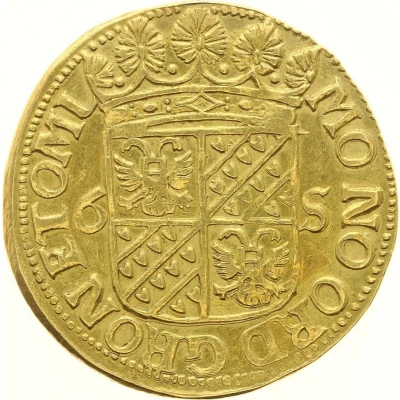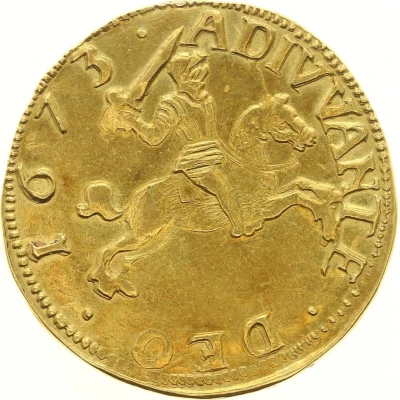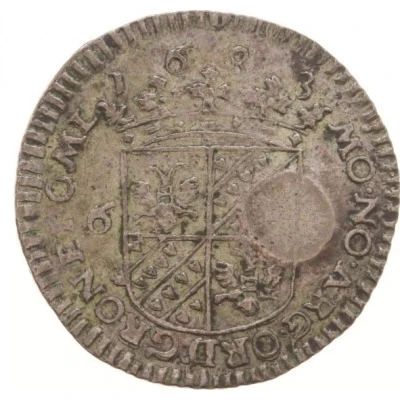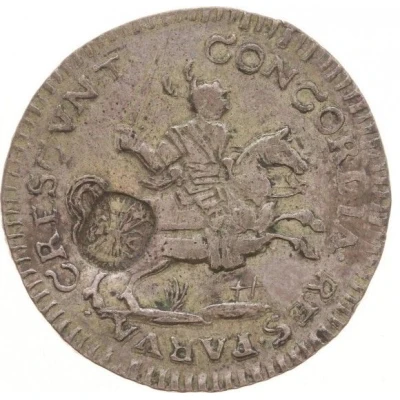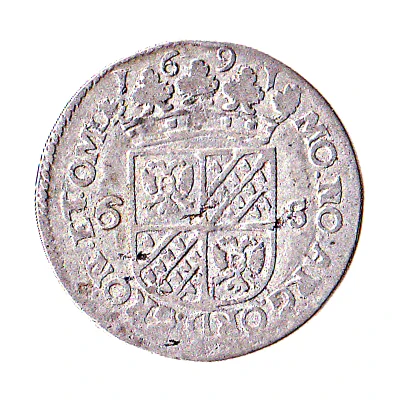
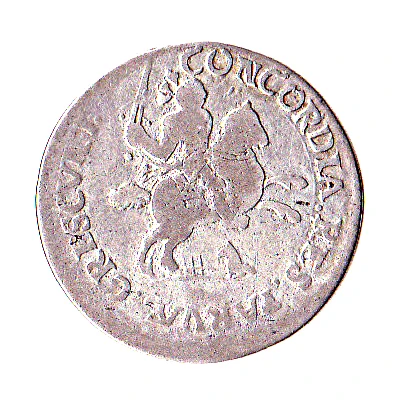

© Leon
6 Stivers "Rijderschelling"
| Silver (.583) | 4.95 g | 22.5 mm |
| Issuer | Province of Groningen and the Ommelanden (Dutch Republic) |
|---|---|
| Type | Standard circulation coin |
| Years | 1681-1696 |
| Value | 6 Stuivers (0.3) |
| Currency | Gulden (1594-1795) |
| Composition | Silver (.583) |
| Weight | 4.95 g |
| Diameter | 22.5 mm |
| Shape | Round (irregular) |
| Technique | Hammered |
| Orientation | Medal alignment ↑↑ |
| Demonetized | Yes |
| Updated | 2024-10-06 |
| Numista | N#59749 |
|---|---|
| Rarity index | 83% |
Reverse
Armored knight brandishing sword in right hand, riding horse charging right across a field
Script: Latin
Lettering: CONCORDIA . RES . PARVAE . CRESCVNT
Translation: Unity makes strength
Comment
Two subtypes can be differentiated as follows:- The horse appears to be running, and beneath is a tuft of grass and a small fence. Legend ends with rose or dot. 1682-1687 (Ver 182.2, CNM 2.20.16, KM#37.1)
© Heritage Europe
- The horse appears to be rearing up on its hind legs, and beneath is a tuft of grass and a fox (Krause calls it a dog. Main photos) 1691-1692 (Ver 182.3, CNM 2.20.17, KM#37.2)
Interesting fact
One interesting fact about the 6 Stivers "Rijderschelling" coin from the Province of Groningen and the Ommelanden (Dutch Republic) is that it was used as a form of currency in the Dutch East India Company's trade with the Chinese Empire during the 17th and 18th centuries. The coin's silver content and standardized weight made it a reliable and valuable form of exchange in international trade, and it was widely accepted in the Dutch East Indies and other parts of Asia.
